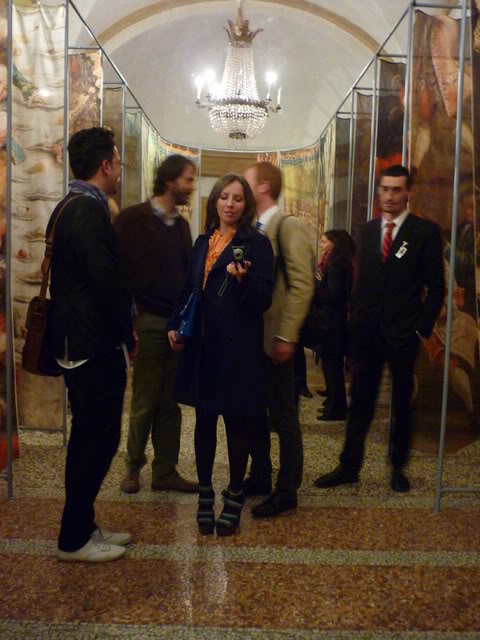

I keep seeing the new French Connection ads everywhere - it's hard not to notice them - they are striking images: clean, with strong lines, and a heavy emphasis on traditional gender stereotypes.
I went to a rather uninspiring event on neuromarketing last night (more on that in a later post), but as I was running out the door I pulled John Berger's Ways of Seeing off my bookshelf and threw it in my bag for on-the-way-there reading. The bit of Berger's book I managed to read on the bus on my way to Hoxton [there's a lesson here: never go to an 'intellectual' event in Hoxton...] turned out to be the most stimulating material I encountered last night.
Then this morning a colleague picked up a copy of Shortlist coming out of the tube and it had the French Connection ads all over the front and back covers. I immediately thought, ah ha!, someone at Fallon's been reading Berger - or at least conforming to gender stereotypes concerning gaze and thus helping to prove Berger's thesis. The beginning of Berger's chapter 3 is worth printing here in full, but it's a bit long, so I won't. I will say that if you haven't read it, you should, as it's really fascinating stuff. If you've ever read anything on film theory, you're bound to have come across the idea of 'the gaze', but Berger is interested in the idea of 'seeing' primarily as a function of fine art, though the FC ads demonstrate how easily this all translates into popular culture.
Berger's argument is essentially that men act and women appear. His elaboration is brutal but reveals some interesting 'truths' about the nature of gender roles in Western society: men are defined by how they survey, while women are defined by how they are surveyed.
According to usage and conventions which are at last being questioned but have no means been overcome, the social presence of a woman is different in kind from that of a man. A man’s presences is dependent upon the promise of power which he embodies. If the promise is large and creditable his presence is striking. If it is small or incredible, he is found to have little presence. The promised power may be moral, physical, temperamental, economic, social, sexual – but its object is always exterior to the man. A man’s presence suggests what he is capable of doing to you or for you. His presence may be fabricated, in the sense that he pretends to be capable of what he is not. But the pretense is always towards a power which he exercises on others.
By contrast, a woman’s presence expresses her own attitude to herself, and defines what can and cannot be done to her. Her presence is manifest in her gestures, voice, opinions, expressions, clothes, chosen surrounding, tastes – indeed there is nothing she can do which does not contribute to her presence. Presence for a woman is so intrinsic to her person that men tend to think of it as an almost physical emanation, a kind of heat or small or aura.
The thing that gets me about the Fallon French Connection ads is that they totally, absolutely, and completely subscribe to Berger's way of seeing (though there's also more than a nod to Jorgen Leth's glorious 1967 Det perfekte menneske). Even if there's a post-ironic smirk lurking just beneath the surface - what with the bunny ears on the manly man and the sardonic expression of boredom on the woman - there's still a glorification of this idea that man is man because of what he sees and woman is woman because she is looked at. Even though I'm not entirely comfortable with Berger's gender-bending division between acting and appearing, I recognise as well as Fallon and co. that it's nevertheless an unavoidable aspect of human nature.








No comments:
Post a Comment